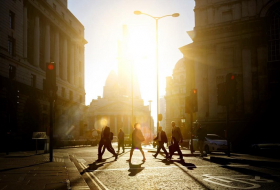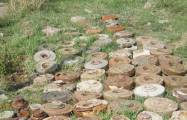The Saffir-Simpson hurricane wind scale currently runs in severity from one to five, with five describing near-total destruction.
But climate scientists meeting at a conference in the New Zealand city of Wellington have floated the idea of creating a category six to reflect the increasing severity of tropical cyclones in the wake of warming sea temperatures and climate change.
Climatologist Michael Mann, the director of the Earth system science center at Penn State University said the current scale could be viewed as increasingly outdated.
“Scientifically, [six] would be a better description of the strength of 200mph (320km/h) storms, and it would also better communicate the well-established finding now that climate change is making the strongest storms even stronger,” he said.
He pointed out that category five was previously considered the highest category necessary because it led to essentially total destruction of human infrastructure. But that was no longer true owing to sturdier construction
“Since the scale is now used as much in a scientific context as it is a damage assessment context, it makes sense to introduce a category six to describe the unprecedented strength 200mph storms we’ve seen over the past few years both globally [Patricia] and here in the southern hemisphere [Winston].”
New Zealand’s climate change minister, James Shaw, said cyclone Winston in 2016 – the strongest cyclone on record in the southern hemisphere – was an example of a cyclone that could have been scaled up to a category six; if the category existed.
“The international cyclone rankings don’t go higher than category five, the only reason it wasn’t a category-six cyclone is because we don’t have a category six, but we might need one in the future,” Shaw told the conference.
But Chris Brandolino, principal scientist at the National Institute of Water and Atmospheric Research in New Zealand, said the ramifications of introducing another category to the scale could be complex, because meteorologists were trained in the old scale, and the public were educated about what the scale means, and how to prepare.
“Categories are engaging to the public and its easy for us to understand and communicate the severity of a storm,” said Brandolino. “I always encourage us re-evaluating the science, we should always be asking ‘is what we are doing appropriate for the time?’ But I think if we are seriously to consider this it requires a holistic approach, looking at the whole scale, not just adding a category. Maybe the whole scale gets rejigged to reflect the times.”
Mann said re-evaluating the scale or adding a category six would have implications for the preparedness of communities in the cyclone’s path, and on scientists’ ability to understand cyclone behaviour as it changes in an age of climate change.
More about: #Storms
















































